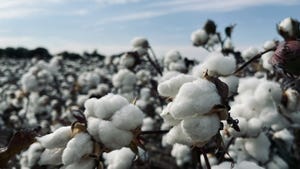Feeder Selection and Material Properties
When choosing a feeder, do not overlook the importance of the properties of the material to be fed.
July 20, 2022

Scott Miller, Solids Handling Technologies Inc.
Choosing the right feeder is not easy. Many factors must be considered making the selection challenging. The first approach may be to look at industry norms or experience. Alternatively, feeder selection may be reduced by some to an economic decision.
Feeder choice often focuses on the ability to control discharge. Depending on the application, this may be on a continuous or batch basis. A process often needs the feeder be able to meet a certain accuracy and precision requirements. Such criteria may result in the use of a volumetric- or gravimetric-style device. Additional duties beyond controlling discharge rate may be needed, such as providing a seal between a storage vessel and the downstream process.
Beyond these items, space constraints may also need to be factored in when picking out a feeding device. For the selection of a feeder in an existing facility, height limitations may exist. The storage vessel might have a certain outlet geometry and outlet size narrowing the options of feeder types. Also, the final delivery point for material may require a feeder capable of delivering product to that location.
All these factors matter when selecting a feeder. Each item above should be heeded, yet these must not displace considering an equally important factor in the feeder selection. The material to be handled must be considered. Every bulk solid has unique characteristics to be accounted for when selecting a feeder. These properties influence how a feeder performs and meets operating requirements.
Unfortunately, there is not one single test or material property that defines what matters when choosing a feeder. There are a vast number of material characteristics that can be ascribed to any one bulk solid. As the multitude of characteristics can be daunting, an overview of potential testing is helpful. The late Fred M. Thomson of Dupont proposed the following four groupings of material properties when selecting a feeder.
The first group of material properties are the flow characteristics. This group of tests are those pioneered by Dr. Andrew Jenike. These properties are closely tied to a materials ability to exit the storage vessel and focus primarily on the cohesive and wall friction properties of a material. These properties are also significant when considering a material’s ability to pass through the feeder.
The second group of properties are more general bulk properties and typically measured on benchtop equipment. This group includes the various types of bulk density and angle of repose. This encompasses the general properties of a bulk material, often with regard to the space and volume that the product occupies. These types of properties are useful in considerations of discharge rate related to a feeder.
The first two groups pertain to the bulk characteristics; the third group is the particle characteristics. This third type looks at properties specific to the individual particles, and includes particle size, particle density, hardness, and abrasiveness. As materials are a collection of particles, there often exists a range of values for these properties. As a result, approximations or generalizations can be made to describe the entire population. This type often matters when considering the sizing and tolerance of a feeder (i.e. very large or very small particles are present). The third group also could relate to concerns of product degradation (the particles being damaged or destroyed) or wear (the feeder eventually being damaged or destroyed).
The final group serves as a catchall for those properties not captured in the previous tests. The fourth type of characteristics often leads to special considerations, limitations, and constraints in feeder selection. Common properties in this fourth type include dust hazards, explosivity characteristics, moisture content, tendency for spoilage, and product quality. Many of these features often relate to safety and general cleanliness.
The four groupings outlined here provide a framework to consider the material testing that may be important to conduct when selecting a feeder. Typically, not all are relevant but, in all cases, some are essential. Many factors should go into feeder selection and design. When choosing a feeder, we must not overlook the importance of the properties of the material we are trying to feed.
Scott Miller has been providing consulting services for Solids Handling Technologies Inc. since 2016. He works closely with clients to evaluate and help address their bulk handling needs. Prior to his work with Solids Handling, he spent several years as a plant engineer at a waste-coal power plant in PA experiencing firsthand the challenges of difficult flowing materials. Miller has a BS in Mechanical Engineering from Geneva College in Beaver Falls, PA. For more information, visit www.solidshandlingtech.com.
You May Also Like


